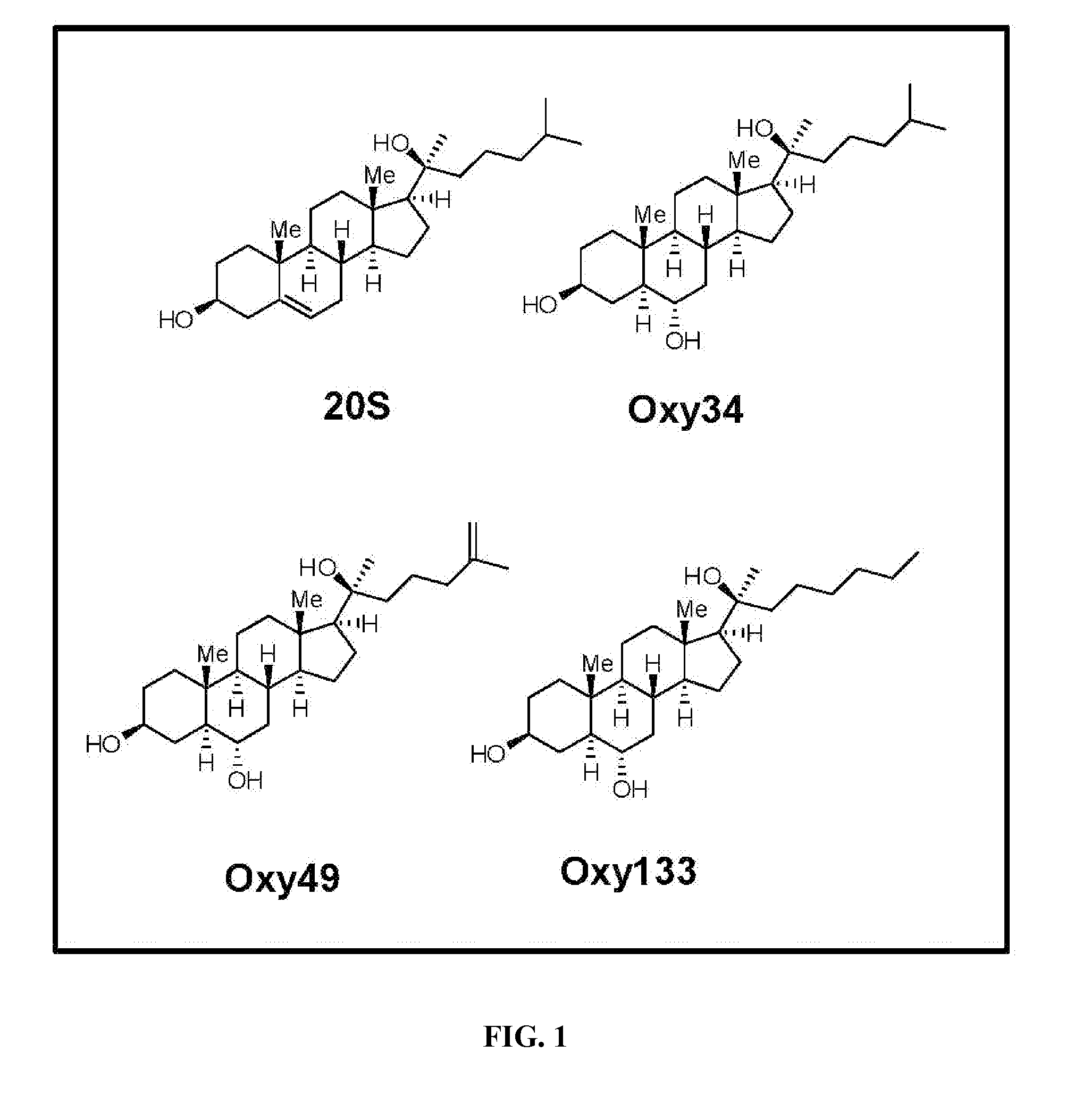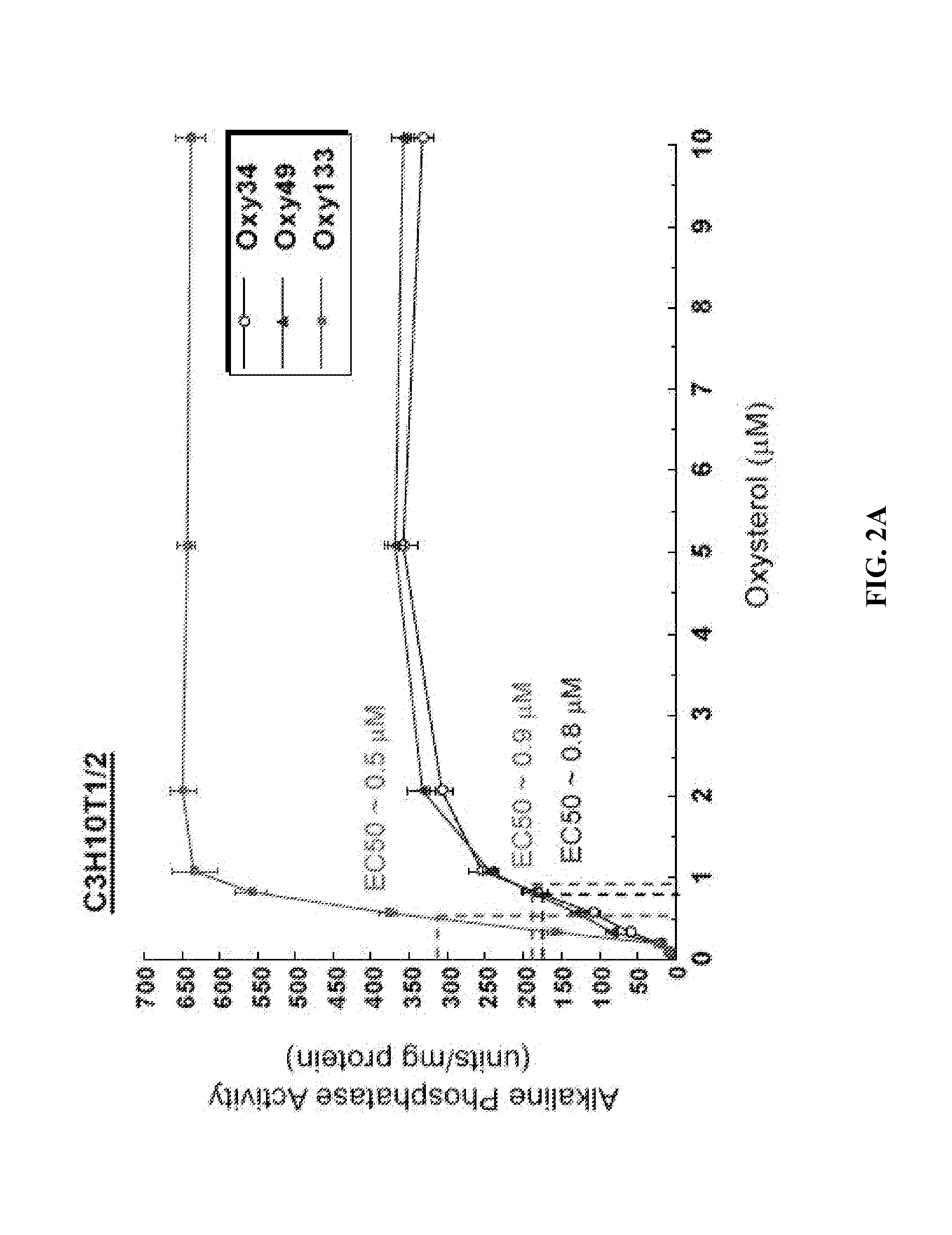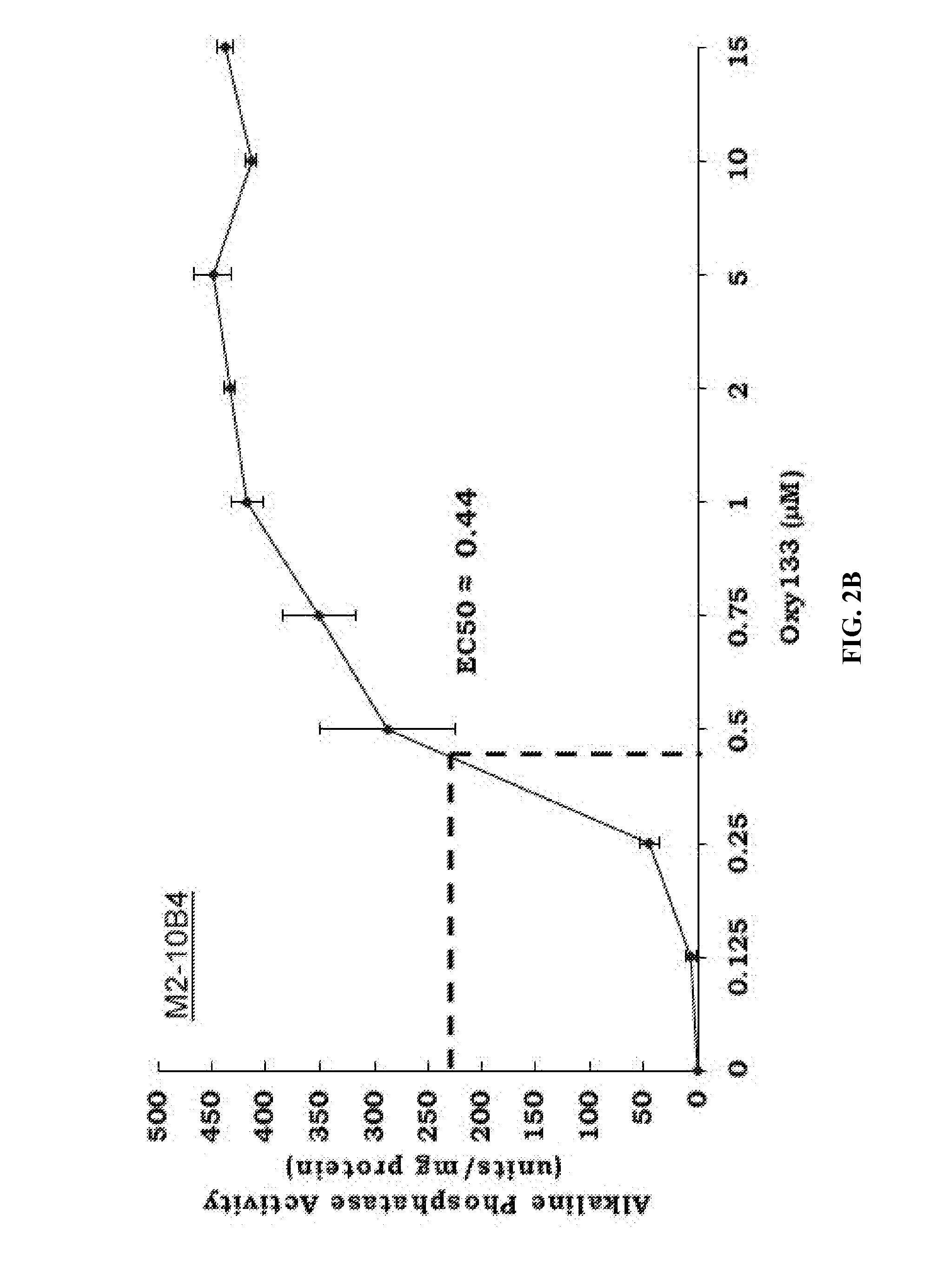Novel oxysterol analogue, oxy149, induces osteogenesis and hedgehog signaling and inhibits adipogenesis
a technology of oxysterol and analogues, which is applied in the field of new oxysterol analogues, oxy149, which induces osteogenesis and hedgehog signaling and inhibits adipogenesis, and can solve the problems of oxysterol priors with wide and unpredictable properties, no commercial anabolic agents for systemic delivery and intervention in bone disorders, and questioned their safety
- Summary
- Abstract
- Description
- Claims
- Application Information
AI Technical Summary
Benefits of technology
Problems solved by technology
Method used
Image
Examples
example i
Materials and Methods
Cell Culture and Reagents
[0069]Mouse multipotent bone marrow stromal cell (MSC) line, M2-10B4 (M2), and embryonic fibroblast cell line C3H10T1 / 2 (C3H) were purchased from American Type Culture Collection (Rockville, Md.) and cultured as we have previously reported (14,15). Treatment to induce osteogenic differentiation was performed in RPMI for M2 cells or DMEM for C3H cells containing 5% fetal bovine serum, 50 μg / ml ascorbate, and 3 mM β-glycerophosphate (βGP) (differentiation media). Cyclopamine was purchased from EMD Biosciences, Inc. (La Jolla, Calif.). Primary human mesenchymal stem cells (HMSC) were purchased from Lonza (Walkersville, Md.), cultured and passaged in growth medium from StemCell Technologies (Vancouver, Canada) according to manufacturer's instructions. Osteogenic differentiation of HMSC was induced by treating the cells in DMEM low glucose containing antibiotics and 10% heat-inactivated FBS, 10-8 M dexamethasone, 10 mM βGP, and 0.2 mM ascorba...
example ii
Synthetic Scheme for the Synthesis of Oxy133 and its Linkage to the Bone Targeting Agent in Order to Create the Hybrid Molecule OXY149
[0081]Materials were obtained from commercial suppliers and were used without further purification. Air or moisture sensitive reactions were conducted under argon atmosphere using oven-dried glassware and standard syringe / septa techniques. The reactions were monitored on silica gel TLC plates under UV light (254 nm) followed by visualization with Hanessian's staining solution. Column chromatography was performed on silica gel 60. 1H NMR spectra were measured in CDCl3. Data obtained are reported as follows in ppm from an internal standard (TMS, 0.0 ppm): chemical shift (multiplicity, integration, coupling constant in Hz.). The following is a stepwise description of the protocol. Structures of Oxy34 and Oxy49, the synthesis of which some of the inventors had previously reported [Johnson et al. (2011), Journal of Cellular Biochemistry 112, 1673-1684], ar...
example iii
Experimental Results: Stimulation by Oxy133 of Osteogenesis of Bone Formation and Spinal Fusion In Vivo
Oxy133 Induces Osteogenic Differentiation of Bone Marrow Stromal Cells, Embryonic Fibroblasts, and Human Mesenchymal Stem Cells
[0093]To achieve the goal of developing a molecule capable of inducing osteogenic differentiation of osteoprogenitor cells, we modified the molecular structure of the most potent osteogenic naturally occurring oxysterol, 20(S)-hydroxycholesterol (20S) based on our understanding of the structure activity relationships observed in over 100 previously synthesized analogues. We previously reported that robust osteogenic differentiation was achieved with two structural analogues of 20S, Oxy34 and Oxy49 (15). These molecules were formed by adding an a hydroxyl (OH) group on carbon 6 (C6) in both Oxy34 and 49, and a double bond between C25 and C27 in Oxy49 (FIG. 1) (15). In studies reported here, we attempted to further improve on these two molecules by developing...
PUM
| Property | Measurement | Unit |
|---|---|---|
| quantitative real-time PCR | aaaaa | aaaaa |
| quantitative real-time PCR | aaaaa | aaaaa |
| quantitative real-time PCR | aaaaa | aaaaa |
Abstract
Description
Claims
Application Information
 Login to View More
Login to View More - R&D
- Intellectual Property
- Life Sciences
- Materials
- Tech Scout
- Unparalleled Data Quality
- Higher Quality Content
- 60% Fewer Hallucinations
Browse by: Latest US Patents, China's latest patents, Technical Efficacy Thesaurus, Application Domain, Technology Topic, Popular Technical Reports.
© 2025 PatSnap. All rights reserved.Legal|Privacy policy|Modern Slavery Act Transparency Statement|Sitemap|About US| Contact US: help@patsnap.com



